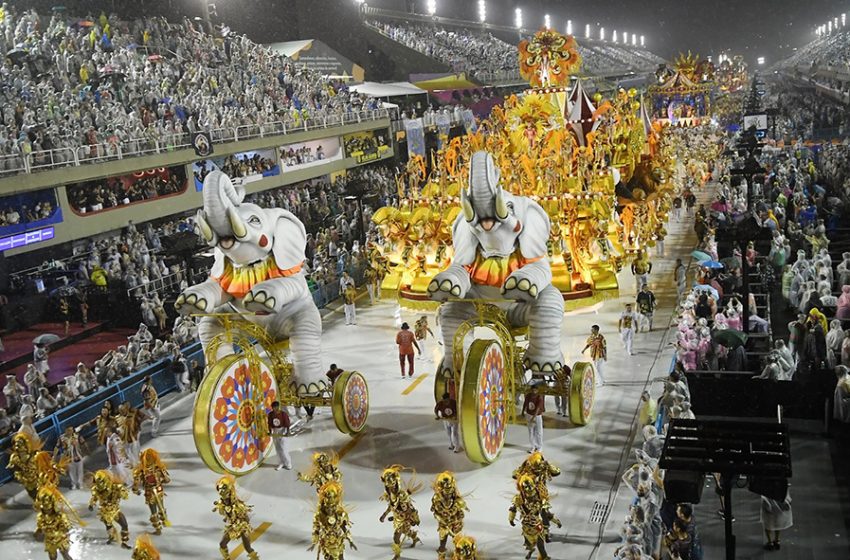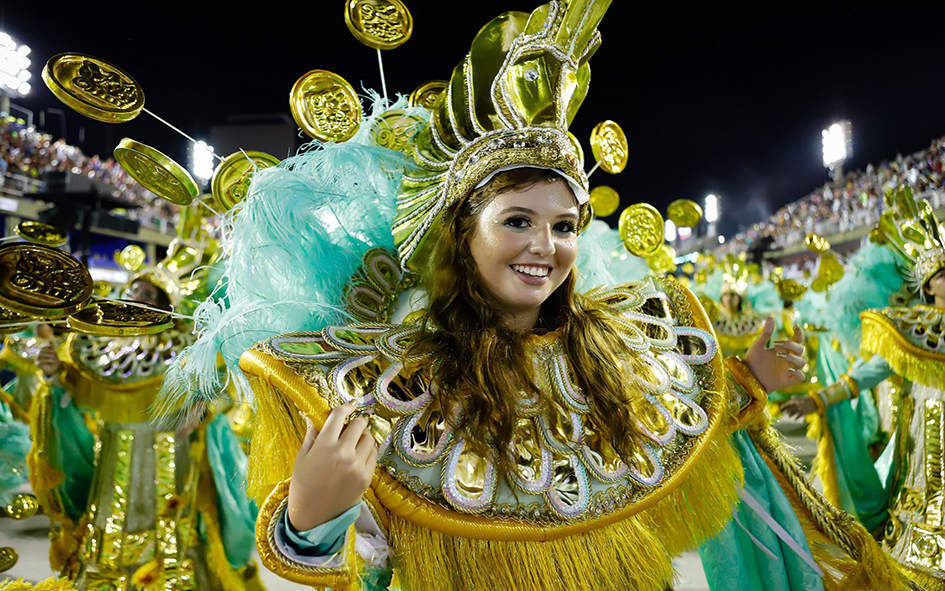CARNIVAL 2022 PARADES IN BRAZIL

Rio de Janeiro, February 29, 2020. Parade of the samba school Acadêmicos do Salgueiro, during the carnival in Rio de Janeiro, considered the largest carnival in the world, at the Sambódromo, in the ci
Carnival returns to Rio in 2022 post a global pandemic that placed a pause on the much-awaited event.
Dubai, United Arab Emirates, April 19, 2022 – The famous carnival parades of Rio will return in 2022 two years after their postponement due to the pandemic. Riotur, Rio’s tourist board, last week revealed the official 2022 carnival calendar for those looking to descent on Brazil’s capital for 10 days of mesmerizing color, dance, and celebration. The parades at the Sambadrome will take place on April 20 and 21 for the Gold Series; April 22 and 23 for the Special Group and April 24 and 30 for the champion’s parade.
The Rio Carnival is considered the world’s greatest party which started a few hundred years ago, when pre-carnivals during the 40-day Lent period of penance were first introduced in Italy. The Carnival of Italy was a huge costume party that soon spread to France, Spain, and other European countries. As Europe extended its reach across the Americas, carnival culture went along with it. The tradition arrived in Brazil with Portugal, and the now world-famous Brazil Carnival was born.

Although it has European roots, carnival in Brazil is not entirely influenced by the continent. A large part of carnival traditions comes from the practices of African culture, a big influence in the Brazilian culture itself. Ancient African customs include parades around villages and crafting masks and costumes out of stones, bones, herbs, and other natural elements. The use of feathers was popular, as they symbolized the ascension and rebirth of spirits. All of these have become key components of Brazil’s carnival to this day. The samba, dance and music, which is the symbol of carnival in Brazil, also has its roots in West Africa and Angola.
Originally, Rio Carnival used to happen on one of the oldest streets in the city – Sambódromo. As it became an increasingly big event, it was necessary to build a street structure with space to conduct such festivities. The governor of Rio commissioned the architect Oscar Niemeyer and the work was completed in 110 days, in time for the 1984 Brazilian Carnival, hence the Sambódromo was born.

Concurrently, São Paulo, Brazil’s biggest city, also have their own carnival parades. São Paulo’s Sambódromo was inaugurated in 1991 at the Anhembi complex, which also hosts other major events, and whose architectural project was also made by Oscar Niemeyer and it is able to welcome about 30,000 spectators.
Today’s carnival in Brazil is a spectacular event, televised around the world and attracts millions of visitors each year. The presentations are luxurious and the infrastructure impeccable.
During the 6 days of parades at the Sambódromo, including the parades of the access groups and the champions, the total visitor numbers can exceed 400,000. In 2020, the estimated visitor numbers for each day of parades in Sapucaí was 500,000 people.
According to research conducted by Rio de Janeiro city, the 2020 carnival, which took place right before the pandemic hit, brought R$ 4 billion (USD 840 million) into the city’s economy. The number appears in the Carnival of Data report, presented at the City Palace.

The Carnival Data Report, carried out in partnership with the Municipal Secretariat for Economic Development, Innovation and Simplification, revealed that the R$ 4 billion in city income derived from the 2020 carnival represented twice the amount recorded ten years earlier. In São Paulo, the 2020 carnival generated around R$ 2.75 billion (USD 578 million) for the city’s economy.
In 2020, the samba school “Império de Casa Verde” paraded in the São Paulo carnival with Lebanon as its theme. The school also showed the Phoenician alphabet, Phoenicians, Assyrians, among other influences from the country’s history, and as characters the guardians of Lebanese ancestry. A float with tigers and other elements illustrated the union and Brazil-Lebanon relations.








